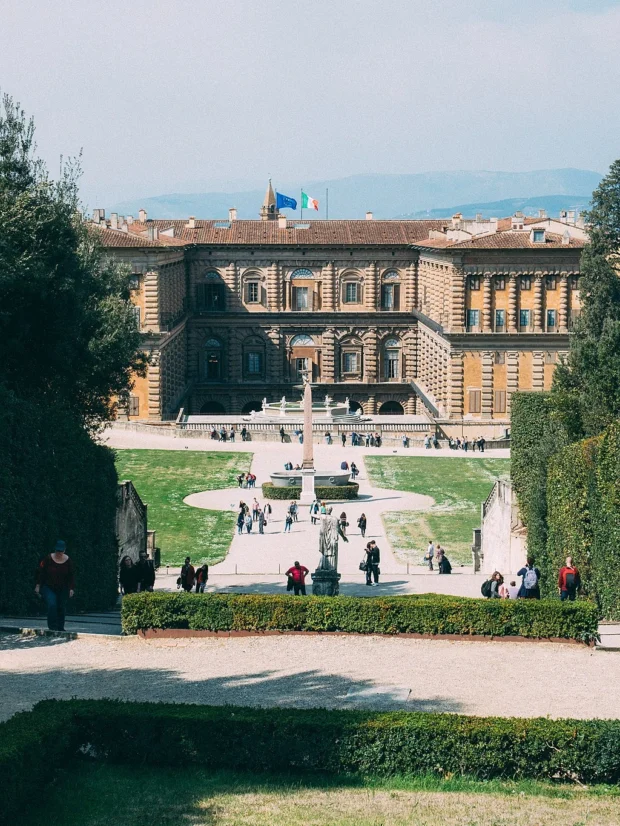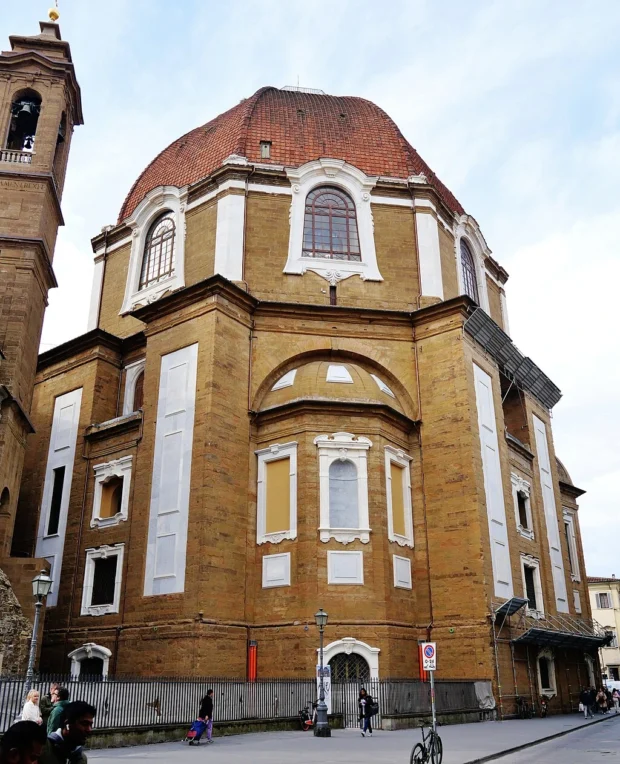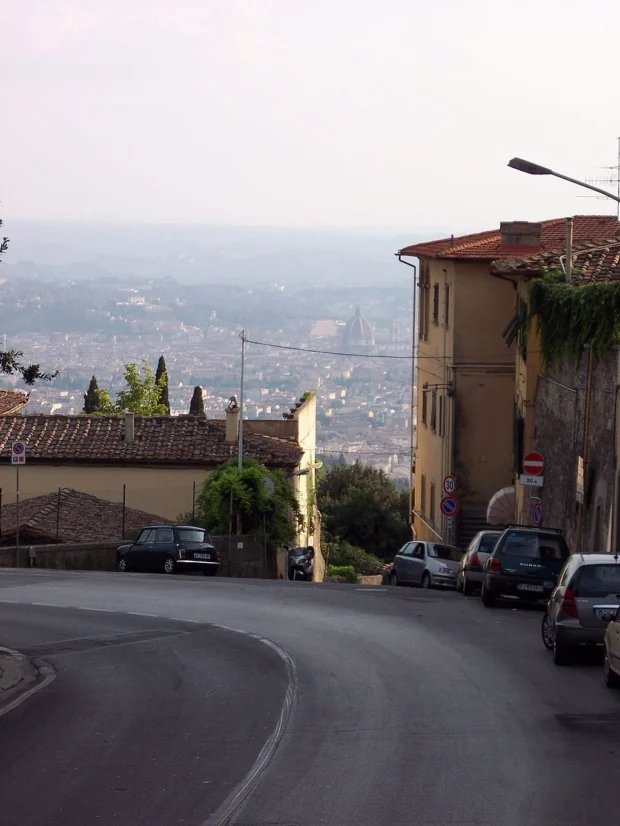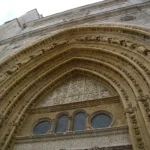Florence, Italy, is often called the birthplace of the Renaissance, but this city offers more than just famous art and grand museums. Walking through its narrow alleys and wide piazzas, you find stories not only in paintings but hidden in stone, light, and daily life. This travel article will guide you on how to approach Florence with an eye for detail, packing in famous sites, lesser-known jewels, local advice, and thoughtful tips that help you see the city like a true Florentine.
Table of Contents

Step Into Renaissance Beauty and Urban Life
Florence’s architecture captures a perfect blend of form and function, showing off centuries of artistic evolution. The heart of the city, Piazza del Duomo, is impossible to miss. The Cathedral of Santa Maria del Fiore stands tall with its terracotta dome designed by Brunelleschi, a masterpiece of engineering and aesthetics that changed how domes were built worldwide. Nearby, the Baptistery and Giotto’s Campanile rise with detailed marble patterns in green, white, and pink-a true testament to the city’s craftsmanship tradition.

As you admire the cathedral, pause to look at the doors of the Baptistery, often called “The Gates of Paradise.” They feature intricate biblical reliefs that seem to glow under the Florentine sun. Inside the cathedral, the vastness of the interior and the complex frescoes offer quiet moments of reflection, different from the bustling square outside.

The flow from Gothic to Renaissance styles in Florence reflects a turning point in art and architecture. Compared to the heavy, vertical Gothic cathedrals in northern Europe, Florence favored balance, light, and clarity. Streets such as Via dei Calzaiuoli link the cathedral with Piazza della Signoria, home to city power and public sculpture-including a copy of Michelangelo’s David standing guard at the Palazzo Vecchio’s entrance.
For a different architectural style, the Duomo of Milan shows Italian Gothic grandeur contrasting Florence’s Renaissance elegance.
For those captivated by Renaissance art, the nearby Uffizi Gallery offers an unmatched collection and architectural beauty to continue your Florentine journey.

Places Off the Beaten Path That Shape Florence’s Character
Visitors often stick to the main squares, but Florence hides quiet courtyards and gardens that captivate those interested in craftsmanship and peaceful design. The Rose Garden (Giardino delle Rose), positioned on a hill, offers panoramic city views framed by carefully planted roses and modern sculptures, blending natural and contemporary artistry. Nearby, the Bardini Garden features terraces, fountains, and staircases revealing layers of history and taste in landscape design.

For a taste of medieval Florence without the crowd, the area around San Niccolò retains original city walls and an old fortress gate. Climbing the fortress steps treats you to a quiet retreat overlooking the Arno River and red rooftops. This neighborhood’s blend of cobblestone paths and artisan workshops holds stories woven by generations of craftspeople.

Artisans still work in their studios in the Oltrarno district, just across the Ponte Vecchio, a medieval bridge famous for its shops selling gold and silver. Watching a goldsmith hammer metal in a tiny workshop is a rare scene rarely seen in busier parts of the city.

Eat Like a Florentine in Each Food Quarter
The culinary culture in Florence reveals its history through simple, local ingredients prepared with care. Start your day with a strong espresso in a small café in the Sant’Ambrogio area, a lively neighborhood with markets and eateries mostly frequented by locals. Here, you can taste lampredotto-a sandwich made from cow stomach, slow-cooked with herbs-a dish typical of Florence’s humble, creative cooking tradition.

Lunch or dinner in the Santa Croce district brings other finds. Order ribollita, a thick Tuscan vegetable and bread soup, or enjoy bistecca alla Fiorentina, a large T-bone steak grilled over oak fires, served rare. Pair these flavors with a glass of Chianti from nearby vineyards, and you will understand why food in Florence carries profound local pride.

How to Navigate Florence Without Stress
Florence’s city center is compact and best explored on foot. This allows you to absorb art and architecture slowly. For longer journeys, Florence’s main station, Santa Maria Novella, connects to regional cities and airports by bus or tram easily. From Florence Airport (Peretola), direct bus lines run frequently into the city center, offering a practical way to begin your urban exploration without fuss.

Florence has banned many private vehicles in historic zones, so walking and public transport become necessary. Try to stay within the historic center for easy access to most landmarks, but neighborhoods farther out provide calm lodgings surrounded by green spaces and local life. Many small guesthouses and apartments offer intimate, authentic environments far from tourist crowds.

Live Florentine Culture: Customs and Tips
Florentines are proud of their city and appreciate when visitors show respect. It’s polite to greet shopkeepers or locals with a friendly “Buongiorno” or “Buonasera.” When entering churches and cathedrals, dress modestly-covering shoulders and knees is expected to show respect for sacred spaces.

Avoid loud talking or eating while walking near monumental sites; locals usually take their time enjoying the ambiance. When sitting for a meal, don’t rush. The Italian dining rhythm encourages savoring each course, conversation, and wine.

Florentines cherish their traditions, such as the historic football game Calcio Storico played each June in Piazza Santa Croce. The game mixes soccer, rugby, and wrestling, exciting even to outsiders for its energy and antique legacy.
Little-Known Stories That Bring Florence Alive
Among Florence’s tales, legend has it that the Ponte Vecchio once hosted butchers’ shops, not jewelers, to avoid bad smells near the Medici palace. Later, the Duke ordered goldsmiths to take over, elevating the bridge to a symbol of wealth and protection. As you cross it, listen for the soft murmurs of history mingled with the river’s flow below.
Also fascinating is the Vasari Corridor-a secret passage built for the Medici family connecting the Palazzo Vecchio with the Uffizi and Pitti Palace across the river. Walking through it today reveals not just art but how power was carefully guarded.
Architectural Highlights Beyond the City Center
Florence’s railway station, Santa Maria Novella, itself showcases early 20th-century design, blending modern functionality with artful decoration. The station’s façade integrates geometric patterns and ceramic tiles, an example of how Florence values both progress and aesthetics evenly.
Outside the heritage sites, check out the Forte di Belvedere, a fortress offering not only moments of quiet reflection but also excellent architectural study in military design. The thick stone walls and lookout towers contrast beautifully with the surrounding hills, telling of Florence’s strategic needs centuries ago.
For lovers of exhibitions and evolving design movements, the Stazione Leopolda, an old railway station turned event space, hosts contemporary shows blending Florence’s past with the future of creative culture.
To plan visits to many of these cultural landmarks, you can refer to the official website of the Opera di Santa Maria del Fiore, which manages access to the cathedral, Baptistery, and surrounding monuments.
For a contrasting journey into history, see Wawel Castle in Krakow, a majestic fortress reflecting Polish royal heritage and legends.
Florence offers layers of art, architecture, and history waiting to be noticed beyond the main postcards. Behind every stone and corner, the city breathes stories of creativity, human skill, and enduring beauty. Take your time, look closely, and allow yourself to be enchanted by one of Italy’s finest cities.

- Firenze – Vista dal Piazzale Michelangelo by PROPOLI87 on Wikimedia Commons – cc by-sa 4.0
- Galería Uffizi, Florencia, Italia, 2022-09-18, DD 59-61 HDR by Diego Delso on Wikimedia Commons – cc by-sa 4.0
- Florence, Italy, Brunelleschi's Dome of Florence Cathedral at sunset by Vyacheslav Argenberg on Wikimedia Commons – cc by 4.0
- Ponte Vecchio (2023) by xiquinhosilva on Wikimedia Commons – cc by 2.0
- Palazzo Pitti Florence by Kai Pilger on Wikimedia Commons – cc by-sa 4.0
- Fountain of Neptune in the Boboli Garden 04 – Firenze (Florence) Italy – panoramio by Carlo V. Mori on Wikimedia Commons – cc by 3.0
- Basílica de la Santa Cruz, Florencia, Italia, 2022-09-18, DD 95 by Diego Delso on Wikimedia Commons – cc by-sa 4.0
- Firenze Piazzale Michelangelo Vista su Firenze 10 by Zairon on Wikimedia Commons – cc by 4.0
- Florencia – Firenze – Palazo Pitti – Palacio Pitti – Pitti Palace – 01 by Xosema on Wikimedia Commons – cc by-sa 4.0
- Firenze Palazzo della Signoria, better known as the Palazzo Vecchio by JoJan on Wikimedia Commons – cc by-sa 3.0
- Firenze Basilica di San Lorenzo Esterno Cappella dei Principi by Zairon on Wikimedia Commons – cc by 4.0
- Basílica de Santa María Novella, Florencia, Italia, 2022-09-19, DD 47 by Diego Delso on Wikimedia Commons – cc by-sa 4.0
